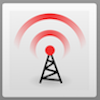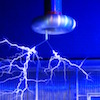
Spotlight on the Brookhaven National Laboratory/Stony Brook University QuarkNet Center
Mentors Ketevi Assamagan at Brookhaven and Dmitri Tsybychev and Michale Rijssenbeek at Stony Brook have a year under their belts with the new version of the BNL/SB center. Helped by lead teacher Gillian Winters and physicists at BNL, the group has been quite busy. In July, they had a three-day workshop that covered wide ground: using the Raspberry Pi in the classroom, detector technology, the MINERvA neutrino masterclass, and astroparticle physics with cosmology. They topped it off with a tour of the National Synchroton Light Source II facility at BNL. Several BNL physicists came in to help.
BNL/SB has been an active particiapting institution in International Masterclasses for some time, and the teachers have worked with the mentors to make sure this continues. They connected with CERN for ATLAS masterclasses in IMC 2019 and are all set to do so again for IMC 2020, with a well-constructed, largely teacher-managed approach that serves the students well.
The BNL/SB group is already planning for the summer and is in position to go strong for 2020, 2021, and beyond.
inspect a radio telescope, summer 2019.

News from QuarkNet Central
If your group is not yet registered for International Masterclasses, please contact Ken as soon as possible. Check the videoconference schedule. The latest IMC circular is out today with information on the impact of COVID-19 on masterclasses. Many masterclass institutes in Europe and Asia have had to cancel due to school situations and restrictions on gatherings. This has affected both the CERN and Fermilab moderation schedules.
There is still time for teams to put together proposals for Beamline for Schools (BL4S). It closes at the end of this month, though! Check out the BL4S notice from CERN on Twitter.

Physics Experiment Roundup
Let's take a walk on the wilder side of experimentation this week. For example, we know the neutron is neutral, but does it have a charge distribution that enables it to have a magnetic moment? We do not know, but APS Physics points us to reasearch to zoom in on neutron charge asymmetry. Not wild enough? How about a fourth neutrino? (You know: nu-e, nu-mu, nu-tau, and, uh, nu-new.) Fermi News tells us how ICARUS is in the hunt. And how do you make the most precise measurements of the Hubble Constant? According to Physics Today, you use gravitational lensing.

Resources
We'll go backwards, from a future experiment to a momentous past discovery. You've read in FF that Brookhaven National Lab will be the site for the new electron-ion collider; now you can read in Physics Today all about the new facility and what it will do. In the present day, in QuarkNet we are all about cosmic ray studies. APS Physics tells us how such measurements are used to inspect railroad tunnels. And, looking back fondly, we see in Fermi News that the top quark was discovered 25 years ago this week at D-Zero and CDF.
Want a few more good resources? Our colleagues at Perimeter Institute oblige.

Just for Fun
Neutrinos? Fun? Of course - leave it to Fermi News and the new activity at Lederman Sciece Center to show us how.
And finally...from xkcd (because this is still the FF, where we still love xkcd): enough said, again, with a hat tip to Rebekah Randall of the Notre Dame Center.
QuarkNet Staff:
Mark Adams: adams@fnal.gov
Ken Cecire: kcecire@nd.edu
Spencer Pasero: spasero@fnal.gov
Shane Wood: swood5@nd.edu